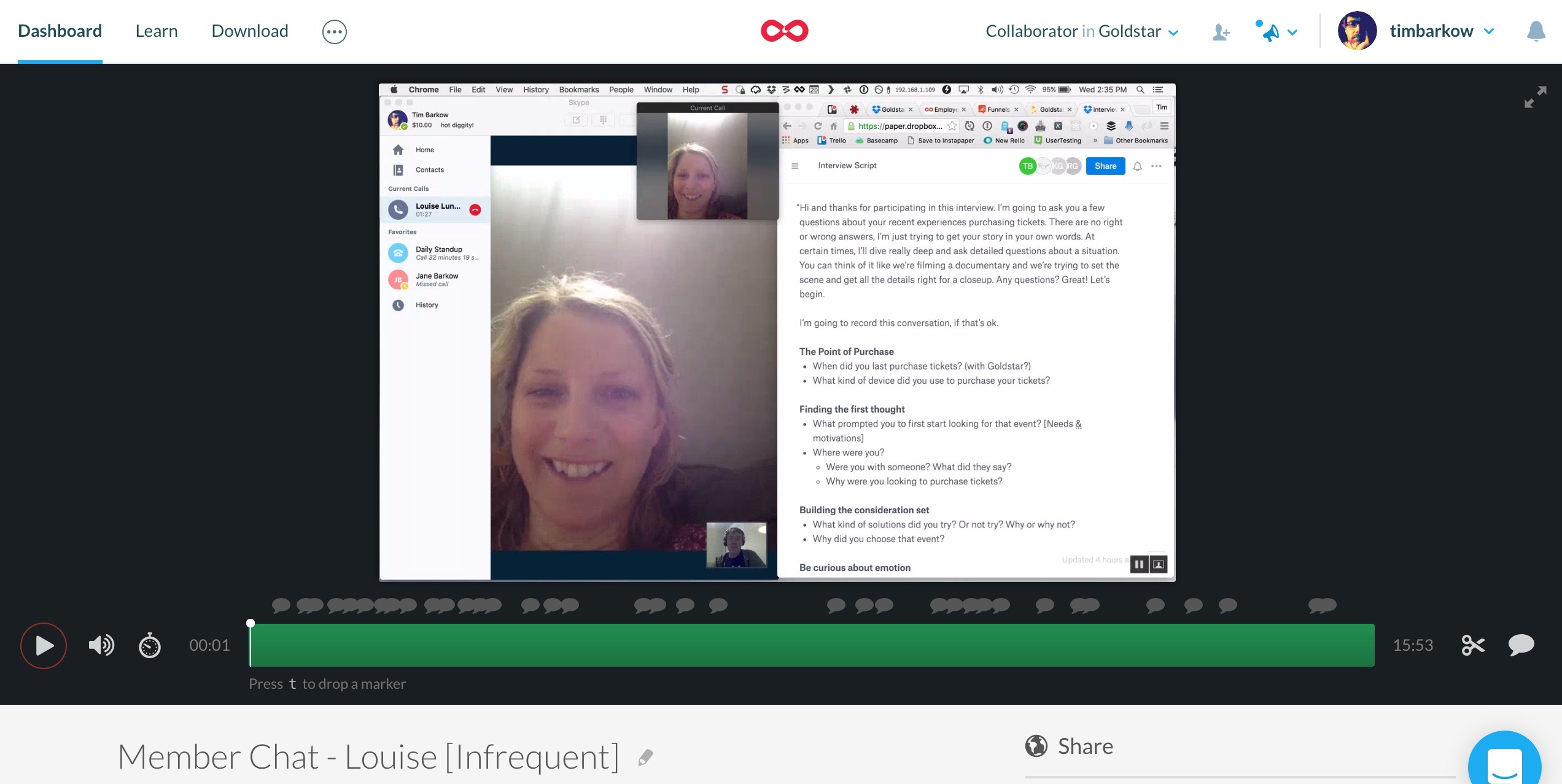Goldstar Brand Positioning Research
In 2016, we realized that while the business had significantly grown, the brand had failed to evolve along with it. So we embarked on a research project to get back in touch with our members and research their motivations in purchasing live entertainment.
Roles Planned and coordinated user interviews, wrote scripts, ran remote user tests, coached team on interviewing skills.
Outcomes Completed research to provide the foundation of the brand project, as well as two new primary personas. Dramatically improved how the executive team approached user-centered product development.
Learned Saw first-hand the importance of including stakeholders in research.
The Story
Goldstar's brand was adrift after being neglected for more than a decade. Working with the CEO and other key execs, we kicked off a brand refresh effort with user research designed to uncover our members' motivations in attending live entertainment.
In around six weeks, we planned, coordinated and interviewed 20 different members, and executed several small remote user tests (~60 participants total). We also compiled summaries of internal customer feedback, and ran tests evaluating the brand perceptions of a range of competitors.
Because we were working with the CEO closely throughout this project, I had to manage expectations and perceptions all around, and saw an opportunity to convince execs to invest in a user research position.

We recorded videos of interviews and uploaded them to Lookback, where the team was able to listen and transcribe the interviews quickly, and immediately share the results with the entire company.
Giving everyone easy access to the videos made a huge difference when it came time to discuss results, as everyone was already up to speed, recognized the names of many interviewees, their personalities, as well as memorable quotes.
“When I’m bored and I’m not doing anything, I figure something’s wrong with my life and I should do something else — put myself out there.” — Fran
We took the research and distilled it into a collection of insights, and used those insights to built empathy paths and two new personas. We were able to immediately start using these artifacts in new projects and help teams be more user-focused.
Challenges
Getting comfortable interviewing took everyone some time. We practiced by starting with a few internal employee interviews. This allowed us to edit the script and get comfortable with active listening and guiding conversations.
I also spent time with the team, as a group and individually, coaching the designers on interviewing and listening skills. It took some practice to learn how to lead interviewees away from giving us feedback and toward discussing their deeper goals and motivations. All in all, it was challenging and very rewarding for the team.

Outcomes
Most directly, the research informed our brand positioning discussions and allowed us test position statements with users. We used this feedback to regularly guide our progress througout the brand redesign project.
With the brand position in hand, we were able to bring it, along with research highlights, to the rest of the company, where we are using it to spark a renewed sense of purpose in all of our work.
The research also revealed several areas where our customers' expectations had evolved in surprising ways. The growth of Stubhub and the online ticket resale market, for example, had eroded customer trust in buying tickets online, something that hadn't been an issue several years ago.
It validated the importance of UX research at the C-level, and allowed me to move one of my designers into a user research role, where she quickly blossomed. It also gave us a head start in building a new customer advisory panel, a database of customers we can get in touch with for quick feedback.

